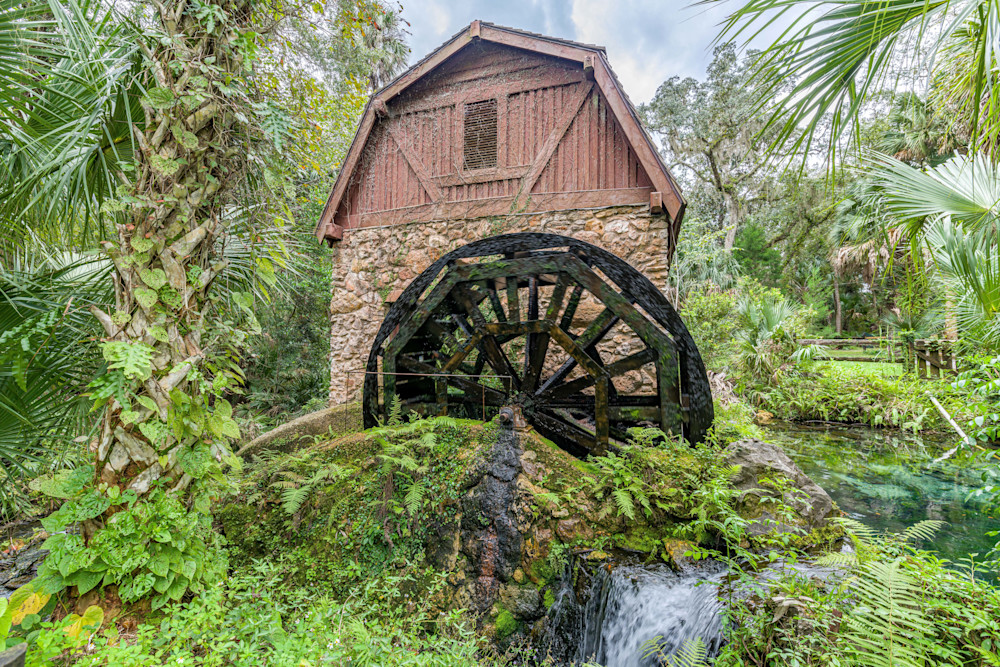The "Millhouse" at Juniper Springs refers to a historic structure built by the Civilian Conservation Corps (CCC) during the Great Depression in the 1930s. The CCC was a work relief program that provided employment for young men while contributing to the development of public lands. The millhouse at Juniper Springs is part of the historical and architectural heritage of the area.
**Features of the Juniper Springs Millhouse:**
1. **Architectural Style:**
- The millhouse reflects the architectural style commonly associated with CCC projects. This typically includes the use of native materials, such as stone and wood, and a rustic design that blends with the natural surroundings.
2. **Waterwheel Mechanism:**
- While it's not a functioning mill, the millhouse at Juniper Springs may have originally featured a waterwheel or other water-driven mechanisms. These components were common in CCC-built structures and added both functionality and aesthetic appeal.
3. **Historical Significance:**
- The millhouse holds historical significance as a tangible representation of the efforts made during the Great Depression to provide employment and develop recreational facilities on public lands.
4. **Location:**
- The millhouse is situated near Juniper Springs, a natural spring that feeds into a pool and creates a picturesque setting. The location enhances the overall experience for visitors exploring the area.
5. **Educational Displays:**
- The millhouse may feature educational displays or interpretive signage explaining its history, the CCC's role, and the significance of the water-driven mechanisms. This provides visitors with insights into the past and the conservation efforts of the time.
6. **Visitor Center:**
- In some cases, historical structures like the millhouse are repurposed as visitor centers. Visitor centers often house exhibits, information about the natural environment, and details about the recreational opportunities available in the area.
7. **Picnic and Rest Areas:**
- The vicinity of the millhouse might include picnic areas or rest spots where visitors can relax and enjoy the natural surroundings. These areas contribute to the overall experience of spending time at Juniper Springs.
8. **Nature Trails:**
- The millhouse may be a focal point for nature trails, allowing visitors to explore the surrounding landscape. Interpretive trails often lead to points of interest, providing a deeper understanding of the area's natural and historical features.
9. **Preservation Efforts:**
- Efforts are likely in place to preserve and maintain the millhouse as part of Juniper Springs' historical and cultural heritage. Preservation ensures that future generations can appreciate the history and craftsmanship of the structure.
If you plan to visit Juniper Springs and the millhouse, I recommend checking with the U.S. Forest Service or the official management agency overseeing Juniper Springs for the most up-to-date information, including any interpretive programs or events related to the millhouse.
















